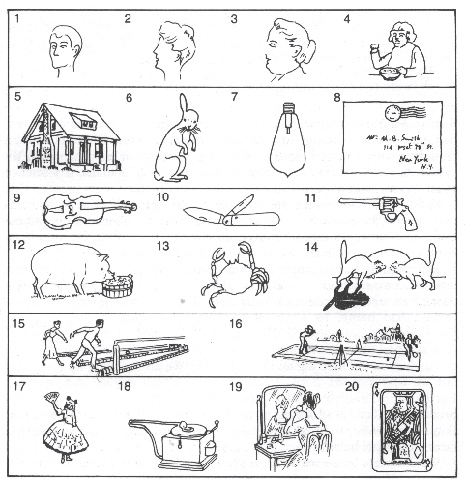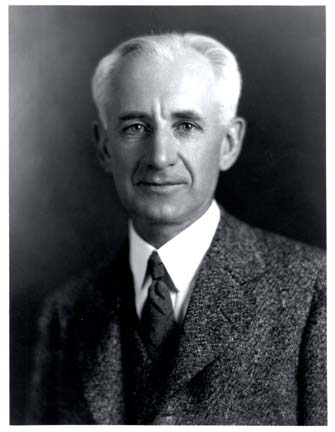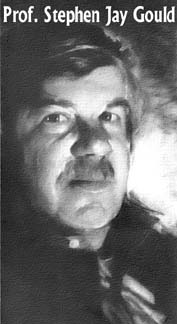A web site full of stuff that should be useful
| AS Psychology |
| Core Studies |
| Links |
| Course Content |
| Exam Questions |
| Psychological Investigation |
| Stuff |
| Glossary |
| About this site |
|
Robert Yerkes
|
![]()
Gould, S. J. (1982)
A Nation of Morons.
Background
Intelligence testing has and still does create considerable controversy. One of the most discussed debates around intelligence is whether the differences between individuals can be explained by genetic or environmental causes.
Alfred Binet developed the first tests of
intelligence in France, where he devised intelligence tests to identify
children in need of special education. Binet believed that children who
were in need of extra help could be identified by these tests, but
importantly he argued that intelligence is not a fixed quantity and that
it can be improved by further help. Subsequently, Binet's ideas have
led to the development of intelligence
quotient (IQ).
However, other supporters of intelligence testing became scientists who believed that individual differences are mainly due to genetic factors, and that a society could, using mass intelligence testing, scientifically breed a superior group of people (this is referred to as eugenics).
Those scientists in favour of eugenics arguments
believe that they should identify the less intelligent and prevent them
from having children. They believe that a consequence of this is that the
genetic stock of the population will be improved.
Yerkes was a psychologist who believed that intelligence was a fixed quantity and he set out to carry out one of the largest test of intelligence in history. This study is a summary of an article written by Gould who exposed many of the problems with Yerkes’ intelligence testing.
Aim
The aim of this article was to expose the fundamental problems involved in the attempts to measure intelligence.
Procedure
(this is the procedure carried out by Yerkes)
An intelligence test is an example of a psychometric test in that it is an instrument devised for measuring mental characteristics
Robert Yerkes was a psychologist and in 1915 mental
testing did not enjoy much credibility, so Yerkes tried to change this.
Yerkes was concerned to establish psychology as a ‘hard’
science and believed that using such a ‘scientific’ approach to
mental testing looked a promising route to achieve this.
He believed that intelligence testing should be as rigorous as any
other science and he equated science with number and quantification
During the First World War (1914-18) Yerkes found an opportunity to promote the use and status of mental testing and therefore the status of psychology as a serious science. The American military gave Colonel Yerkes (as he liked to call himself) permission to carry out mental tests to over 1.75 million army recruits.
In 1917, Yerkes devised three types of mental tests:
Army Alpha - A written test for literate recruits. The Alpha test had eight parts, such as analogies, filling in the missing number, and unscrambling a sentence. These types of tests have now become common in modern IQ tests.
Army Beta - A pictorial test for men who were illiterate or who failed the alpha. The Beta test had seven parts including running a maze, number work and the picture completion task (shown in Figure 1).
Individual Examination - An individual spoken test for men who failed the Beta
The Alpha and Beta tests could be administered to large groups and took less than an hour to complete.
Figure 1: Picture completion task

What’s missing from these pictures?
Findings/Results
(these are Yerkes’ findings)
Yerkes argued that his tests measured ‘native intellectual ability’, in other words, innate intelligence which was unaffected by culture and educational opportunities.
At the time, the results had a considerable impact, and by the end of the War some of the army camps were using the tests to screen people for officer training. (Each recruit was to be graded from A+ to E- and suggestions as to suitable army placements were to be made. Men scoring below grade C were not thought to be suitable officer material).
The tests generated considerable interest and Yerkes was able to refer to ‘the steady stream of requests from commercial concerns, educational institutions and individuals for the use of army methods of psychological examining or for adaptation of such methods to special needs’. Mental testing and psychology had achieved the credibility as a hard science that Yerkes wanted.
Three ‘facts’ were discovered from the intelligence testing.:
- The average mental age of White American adults
was 13. The score of 13
was at the top of the category of ‘moronity’.
That is why the title of the article is ‘A Nation of
Morons’, because the ‘data’ showed that the USA
was just that. Terman had
previously set the standard at 16.
- It was possible to grade European immigrants by
their country of origin. The
average man of many countries was a moron, with the fair people of
Northern and Western Europe scoring higher than the Slavs of Eastern
Europe and the darker people of Southern Europe. (The average Russian
had a mental age of 11.34; the Italian, 11.01; the Pole, 10.74).
-
The average score of Black men was 10.4, which was considerably below the White average.
Explanations
(these are Yerkes’ explanations of the results)
The ‘finding’ that the average
White American was a moron did cause some concern. However most concern was in response to the other two ‘facts’.
These findings were used to support the idea of
genetic differences between ‘races’.
Carl Brigham, one of Yerkes’ colleagues, using a genetic
explanation of the data proposed the racial superiority of the Nordic
people (from Northern Europe).
Similarly it was argued that the average scores from
the different national groups reflected innate racial differences.
Based on these ‘facts’, and lobbying from scientists who supported the eugenics argument, the Immigration Restriction Act (1924) was passed by the US Congress. The Act set immigration quotas based on the US population in 1890 (over 30 years prior to the Act). This year was used as the benchmark because immigration from Southern and Eastern Europe had been relatively low before this date.
During the next 20 years, conditions deteriorated dramatically in Europe for Slavs and Jews as the Nazi governments enacted policies of ‘racial purity’ culminating in genocide. Estimates suggest that the immigration quotas barred up to six million people from southern, central and eastern Europe, a number with great significance in the history of Europe.
Criticisms
of Procedure (these are Gould’s criticisms of Yerkes’ procedure)
Gould identified many problems with the mass intelligence testing. In particular he pointed to the cultural bias in the tests. The level of cultural and educational knowledge required is very obvious in the examples from the Alpha tests given below:
Crisco
is a: patent medicine, disinfectant, toothpaste, food product
Washington is to Adams as first is to . . .
Christy
Mathewson is famous as a: writer, artist, baseball player, comedian.
Similarly the Beta test also required a level of
cultural and educational knowledge to be completed successfully.
For example, recent immigrants would have to be familiar with
phonograms, tennis courts and light bulbs.
There were also a number of problems in the administration of the tests. In particular, many who were illiterate in English were still allocated to the Alpha test and so scored zero or near to zero. Because Yerkes had overestimated the level of literacy the queues for the Beta test became very long, leading to the inappropriate re-allocation of men to the Alpha test. Failures on the Alpha tests were often not recalled to take the Beta test. Therefore, recent immigrants who had a poor grasp of English, and Black men who had not been given much, if any, formal education, were unable to score on the Alpha test.
Another problem was that even the Beta test required the use of pencil and the writing of numbers, and many men had never even seen or used a pencil before.
Conditions in which the tests were taken were also unsatisfactory. For example, the time allowed was insufficient and an air of panic surrounded the whole procedure. To men unused to the written word or number, the event must have been extremely bewildering.
Gould argues that with such problems, the data should be looked at with considerable scepticism.
Evaluation
of Explanation
Gould clearly exposes some of the ridiculous and
racist explanations put forward by Yerkes and his colleagues.
For example, in trying to explain the low average scores for Jewish men despite the very many major accomplishments of Jewish scholars, statesmen and performing artists. Brigham argued that we notice the exceptional performance of some Jews (for example, Einstein) because it is unusual against the performance of the average Jew.
There were two major problems with the data. First,
the immigration of different national groups had taken place at different
times, and the most recent immigrants, and hence the least familiar with
English, were the Slavs and the people from Southern Europe. So if
literacy was having an effect on the test scores then these people would
be disadvantaged.
Secondly, the data showed that the average score rose with length of residence in the USA. This is a clear indication that the more experience a person had of the USA the higher their score on the test, suggesting a cultural bias in the questions. Brigham, however, argued quite bizarrely that this data showed that the early immigrants were the brightest from each national group, and the subsequent immigrants were progressively more stupid.
Importantly the study highlights the need to examine
the political context of psychological explanations.
Gould’s article clearly highlights the scientific racism, (i.e.
the use of bogus scientific arguments to oppress another group) in the
arguments made by Yerkes and uncovered some of the awful consequences of
this racism.
It is staggering that such debates do still go on
today. There is no good evidence to support the view that differences in
IQ scores are due to genetic differences. There is also a lack of any
clear operational definition of intelligence, which obviously undermines
any line of argument. Similarly
concept of ‘race’ defies definition, which is why we should perhaps
argue that ‘race’ is more a political construct rather than a biological
one.
References
Gould, S.J. (1982) A nation of morons. New Scientist (6 May 1982), 349 - 52
GROSS, R. (1999) Key Studies in Psychology, 3rd Edition. London: Hodder and Stoughton
BANYARD, P. AND GRAYSON, A. (2000) Introducing Psychological Research; Seventy Studies that Shape Psychology, 2nd Edition. London: Macmillan

